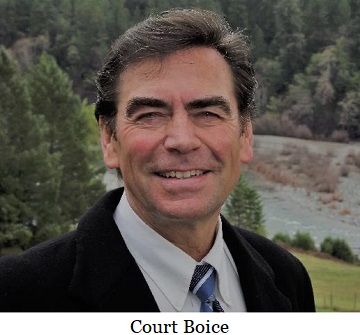A billion-dollar asset management plan won’t break even
OSU formed a memorandum of agreement with the Department of State Lands (DSL) and then spent 5 years and millions of dollars, and put hundreds out of work to come up with a
640 page student-type project for the Elliott Research Forest. OSU bailed from the agreement with DSL, so DSL decided to take over management itself. They inherited a committee that includes three lawyers to forge a way to spend $5 million that was allocated for DSL. They have now presented to the State Land Board a plan rewritten by the lawyers scrapping the plan written by the academics at OSU. It shows a lack of input from stakeholders and experienced people in forest management.
At one point the Elliott Forest was worth a billion dollars in timber and Bob Zybach Ph.D, Environmental Scientist, says it could easily be worth that again with the right forest management plan. In 1962 they logged 50 million feet a year for 30 years and at the end of that time the trees were 30 years older and had a lot more volume than when they started. When the environmentalist took over, they recommended 17 million feet a year, but when it grows 75 million feet, it’s a recipe for more forest fires. Having more growth doesn’t mean the forest will get huge and beautiful – they just get old, diseased, taken out by landslides and fires or die.
Environmentalist want to set up a 70-year plan that supposedly saves a bird that lives in the ocean because they want to save old growth trees. However, what they claim is not factual. There are very few old growth trees in the Elliott Forest, says Zybach. It isn’t critical habitat for spotted owls or marbled murrelets, they are making that up because the law allows them to do so, and they have three lawyers willing to fool the public.
The Elliott has been in decline for 30 years, so we are at a critical point where we have to start managing it again or it’s going to burn.
The proposed plan will only make enough to cover costs for basic maintenance when combined with selling carbon credits. OSU backed out of the management because of the carbon credit scheme. Selling carbon credits will allow the buyer to spew additional carbon into the environment over their carbon limit based on the amount of credits purchased. It does nothing to reduce carbon in the environment, and when the trees burn or die, all that carbon is released anyway. Where logging seals the carbon in the wood and could provide affordable housing.
Every time you cut a million board feet of trees, the standard is it creates 8.8 jobs, and if you cut 50 million board feet, it would be 440 jobs in some of our smallest communities that are really hurting for jobs.
The State Land Board meeting April 9 considered for about 10 minutes, the Elliott State Research Oversight Structure framing the operation for management by the Department of State Lands. The actual plan for management is still in the working stage.
Dr. Zybach testified that the operations of HCP that continues is a catastrophe pointing to the drawbacks of having the state manage the forest.
Two legislators testified that the board should take time to review alternative plans before making a decision.
A D V E R T I S E M E N T

A D V E R T I S E M E N T
Representative Court Boice (R-South Coast, home of the Elliott Forest) testified regarding the devastation to his district from fires and damage to the recovery of fish populations. He presented five requests
written in detail:
- Clear under brush and ladder fuels.
- Sell 50 million feet of 50-60-year-old plantations immediately.
- Document rhetorical 550 miles of roads and trails.
- Take additional time to design and develop a productive partnerships.
- Take a reasonable portion of the 90,000 acres and make a state park that is funded by the harvest.
In the end, it was obvious the board had already decided to approve the framing structure, which puts DSL as manager. There were 23 written responses including 6 legislators, Oregon Advocates for School Trust Lands, Oregon Grange, Oregon Natural Resource Industries, Oregon Websites & Watersheds Project, Inc., and 13 individuals. All opposed having DSL continue with the framework they presented.
Governor Kotek closed the 3-0 vote by stating she isn’t a scientist and trust that the process will select an advisory committee with experts. Where is the science behind this vote?
--Donna Bleiler| Post Date: 2024-04-11 09:27:29 | Last Update: 2024-04-11 11:37:10 |







